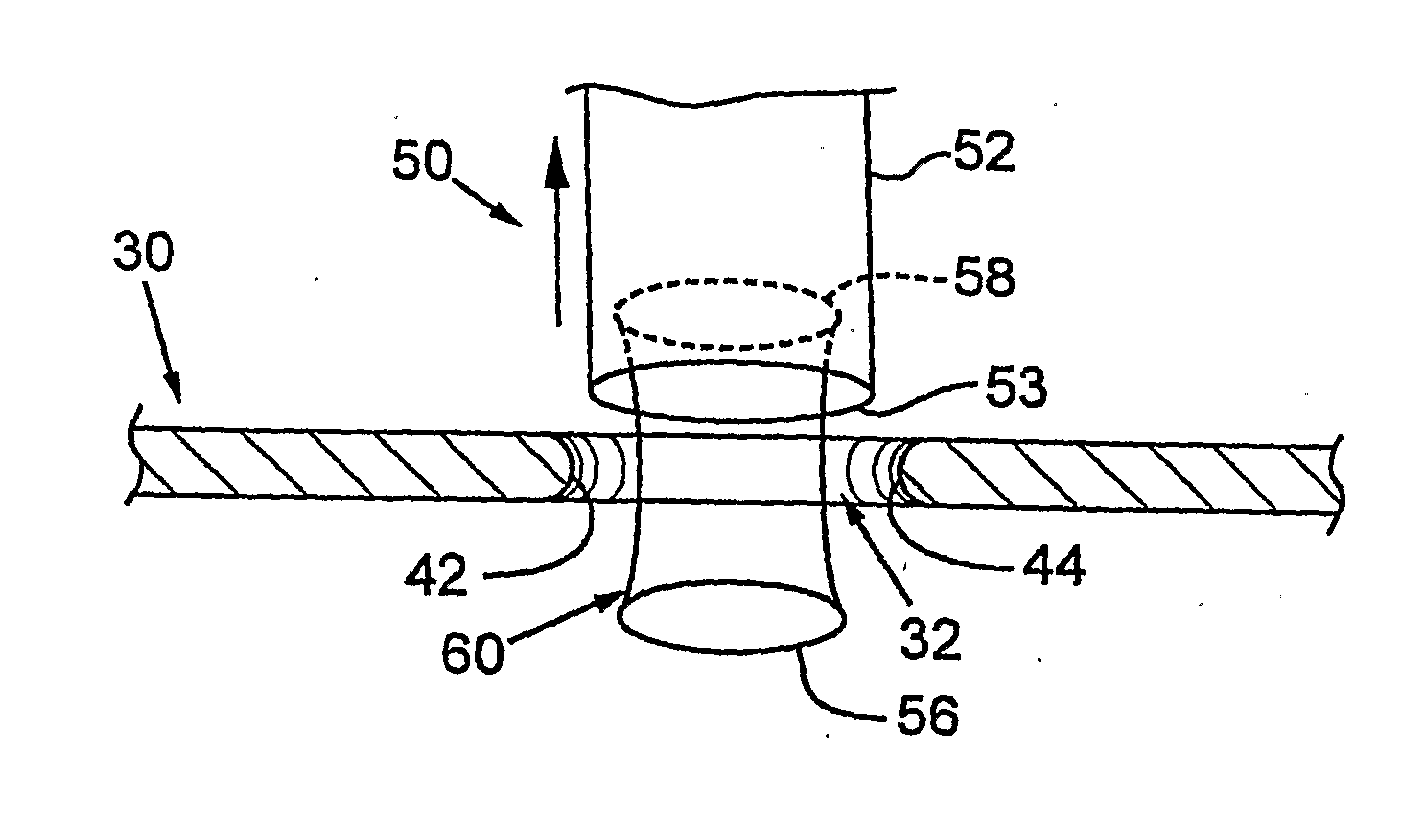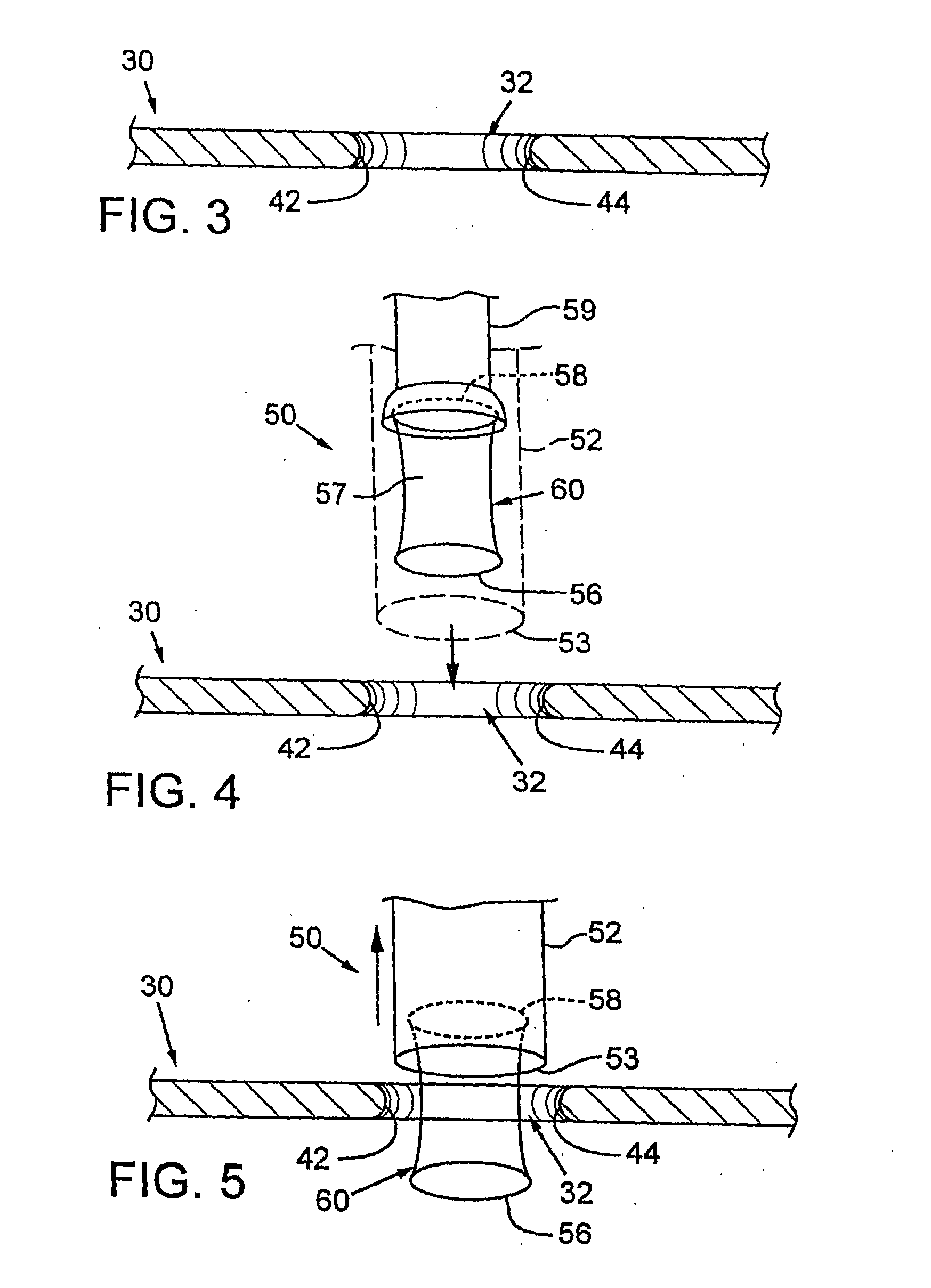Interfacial stent and method of maintaining patency of surgical fenestrations
a fenestration and interfacial stent technology, applied in the field of implantable stents, can solve the problems of increasing the pressure inside the brain, enlargement of the cranium, and compression of intracranial brain tissue, and achieve the effect of maintaining the patency of the opening
- Summary
- Abstract
- Description
- Claims
- Application Information
AI Technical Summary
Benefits of technology
Problems solved by technology
Method used
Image
Examples
Embodiment Construction
[0028] A. Terms
[0029] In the present description, the terms “opening”, “hole”, “orifice”, “fenestration”, “perforation” and “stoma” all refer to an opening, either naturally existing or artificially created, through an interface of a human body part such as a tissue or membrane. Such interfaces may be found either externally (for example through an ear lobe or other skin surface) or internally (such as the wall of a hollow organ, or wall of a substructure of an organ, such as the ventricles of the brain or the interventricular lumen). In contrast, the term “lumen” refers to the open space within an elongated tubular vessel. Hence an opening, hole, fenestration or perforation is typically present in tissue interface, in contrast to a lumen, which extends through a tubular or elongated extended tissue structure. In addition, the embodiments of the stent disclosed herein are devised to maintain the patency of an artificially created opening, instead of restoring patency of a pre-exist...
PUM
| Property | Measurement | Unit |
|---|---|---|
| Length | aaaaa | aaaaa |
| Length | aaaaa | aaaaa |
| Length | aaaaa | aaaaa |
Abstract
Description
Claims
Application Information
 Login to View More
Login to View More - R&D
- Intellectual Property
- Life Sciences
- Materials
- Tech Scout
- Unparalleled Data Quality
- Higher Quality Content
- 60% Fewer Hallucinations
Browse by: Latest US Patents, China's latest patents, Technical Efficacy Thesaurus, Application Domain, Technology Topic, Popular Technical Reports.
© 2025 PatSnap. All rights reserved.Legal|Privacy policy|Modern Slavery Act Transparency Statement|Sitemap|About US| Contact US: help@patsnap.com



